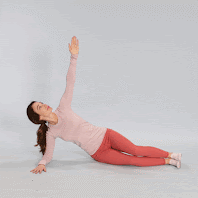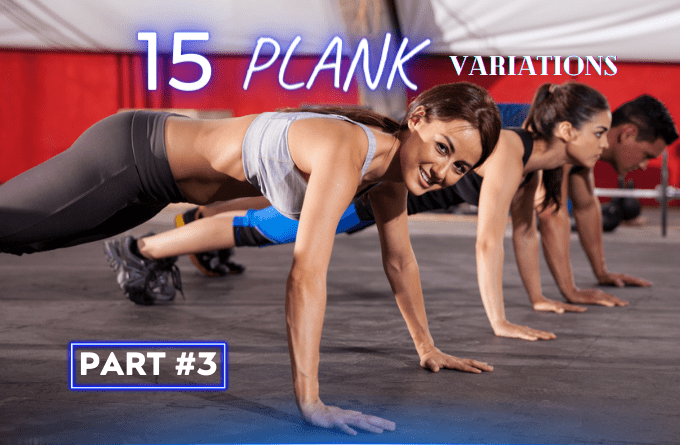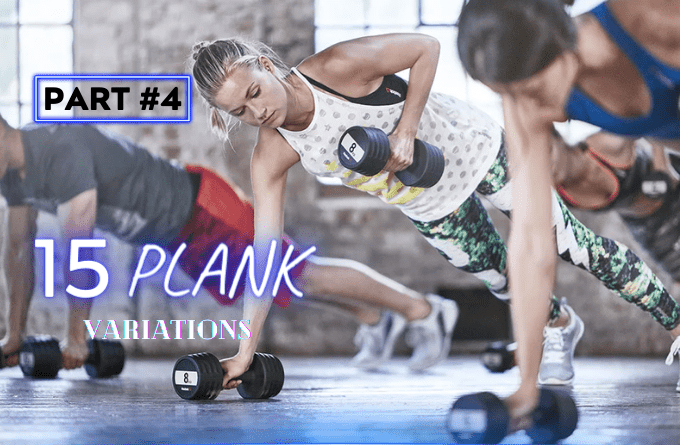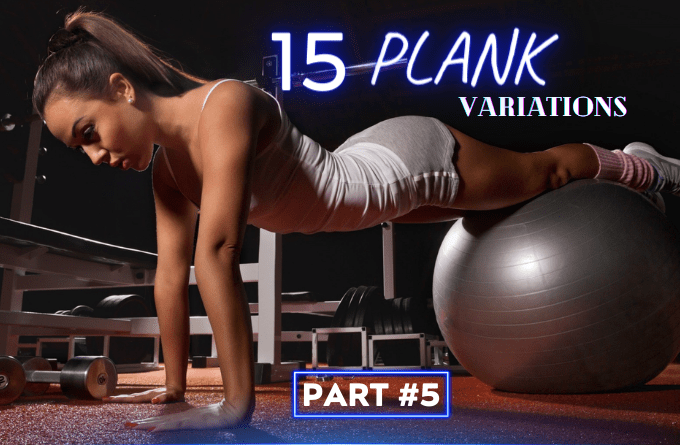
Table of Contents
ToggleExplore three intermediate plank variations designed to intensify your workout, bridging the gap between basic and advanced techniques.
Transitioning to Intermediate Planking
Ready to level up your planking routine? In this article, we’ll dive into three intermediate plank variations that add complexity and intensity to your workout, helping you progress towards more advanced techniques.
Takeaway Tip:
Consistency is key when it comes to reaping the rewards of planking. Aim for a mix of variations, gradually increasing duration or difficulty. Whether it’s a classic plank or an advanced variation, integrating them regularly can transform your fitness journey.
4. Straight-arm (full) plank
Transitioning from the forearm plank, the straight-arm plank intensifies the workout by engaging more muscles, including the shoulders, while maintaining core stability.
As you build up your strength, try increasing the difficulty by transitioning to a straight-arm plank, also known as a full plank.

Start on all fours with your hands directly under your shoulders and your knees slightly behind your hips.
Push your hands into the floor and raise one knee at a time off the floor. Straighten both legs, so you’re in a straight line from heels to head. Your body should look as if you’re in the upward position of a pushup. Ensure that your hands and shoulders are aligned, legs are strong, feet are hip-width apart, and core is engaged.
Hold this position for 30 seconds or longer — as long as you can maintain proper form.
5. Forearm to full plank
Mastering the transition between forearm and full planks challenges the body’s coordination and strength, enhancing overall stability and endurance.
You already know how to do a traditional plank, but transitioning between forearm and full plank is a great way to progress your workout.

Start in forearm plank position.
Straighten one arm at a time to lift yourself into the full plank. Try this slowly at first to perfect the transition. Place your hands where your elbows were so that your hands are directly under your shoulders in high plank.
Return to forearm plank position by slowly bending one arm and then the other.
Continue this for 30 seconds for 1 set, performing 2–3 sets total. As you progress, pick up the pace according to your comfort level.
Pro-tip: Engage your core to minimize swaying of your hips as you alternate positions.
6. Side plank on forearm
The side plank targets the obliques and hip abductors, providing a unique challenge to core strength and stability.
The side plank is another excellent exercise that largely targets your obliques — the muscles on the sides of your torso — and your hip abductors.

Lie on one side with your legs almost straight and your hips, knees, and feet stacked. Ensure that your elbow is directly under your shoulder, with your forearm flat. Lift your other arm straight into the air (or keep it at your side if this is too difficult).
Push your hand and forearm into the floor to lift your torso. Maintain a tight core and keep your hips lifted, straightening your legs fully. Your body should be close to a straight line.
Try to hold this position for 20–30 seconds, then switch sides.
Pro tip: To make it easier, keep your knees touching the floor while you hold the rest of your body up. To modify with knees on the floor, your knees should be bent with your feet pointed back to avoid putting strain on your knees.
Alternatively, you can increase the difficulty and build greater stability with variations such as straightening your arm or raising and lowering your hips.
By mastering these three plank variations, beginners can establish a solid foundation for more challenging exercises while reaping the benefits of a stronger core. As you progress, these variations can be adjusted to suit your increasing strength and endurance levels.
In the forthcoming articles, we’ll explore more challenging plank variations to further intensify your core workout.
<<< Previously: Intermediate Plank Variations Explored
|Part #1 \Part #2 |Part #3 |Part #4 |Part #5
Next: Exploring Advanced Plank Variations >>>
Useful Information:
Maintaining proper form during planks is crucial to prevent injury and maximize benefits. Engage your core muscles, keep your body in a straight line, and avoid sagging or raising your hips. Starting with easier variations and gradually progressing helps build strength safely.







